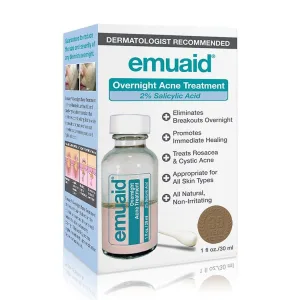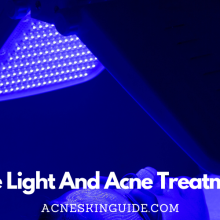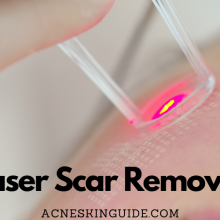Prescription Acne Medications – A Comprehensive Guide | AcneSkinGuide
Summary of Prescription Acne Medications
Acne vulgaris affects millions of Americans annually, with moderate to severe cases often requiring prescription medications. Topical treatments like retinoids, antibiotics, and azelaic acid are usually the first line of defense, applied directly to affected areas. For severe nodular or cystic acne, oral antibiotics, hormonal agents for women, and powerful oral retinoids like isotretinoin may be prescribed to address underlying causes from the inside out. However, antibiotic resistance, severe side effects, and cost can be downsides of certain medications.
Dermatologists emphasize that effective acne treatment requires a personalized, multi-pronged approach combining prescription drugs with over-the-counter products, skincare routines, dietary changes, and lifestyle adjustments. Patience is key as it takes 2-3 months to see full results. For resistant cases, consulting a dermatologist is crucial to develop an intensive, customized treatment plan that finally brings relief.
Our Top 3 Recommended Acne Treatment Products

#1 Paula's Choice Acne Treatment
The 3-step kit features a cleanser and exfoliating solution with 2% salicylic acid, as well as a 5% benzoyl peroxide treatment that effectively treats even severe acne, though the benzoyl peroxide can be drying. The kit delivers serious results for stubborn acne, despite its slightly higher price point compared to drugstore options. Check The Price Now

#2 EMUAID Overnight Acne Treatment
The EMUAID Overnight Acne Treatment features a two-phase solution, with an exfoliating first step to unclog pores and an intensive treatment gel that rapidly reduces inflammation, redness, and swelling of even severe, cystic breakouts, despite a slightly medicinal scent and higher price point compared to other options. Check The Price Now

#3 Differin Acne Treatment
The Differin 0.1% adapalene gel normalizes cell turnover and unclogs pores to effectively treat acne, though it requires 2-3 months of consistent use with an adjustment period of dryness and purging before seeing maximum results, which are worth the effort for clearer, more even-toned skin. Check The Price Now

Acne Medication Breakdown: Your Guide to Prescription Treatments
Acne vulgaris, the clinical term for the red, swollen blemishes that tend to crop up at the most inopportune times, affects up to 50 million Americans annually. While mild cases may respond to over-the-counter products containing benzoyl peroxide or salicylic acid, those with moderate to severe acne often require prescription medication to get their condition under control.
From topical retinoids to powerful oral isotretinoin, dermatologists have an arsenal of prescription acne medications to deploy against those stubborn pimples, cysts, and nodules. Understanding the different options is key to determining the most effective regimen.
Topical Treatments
For mild to moderate acne, topical prescription creams, gels, and solutions are usually the first line of defense. These are applied directly to affected areas of the skin.
Retinoids
Derived from vitamin A, retinoids like tretinoin (Retin-A), adapalene (Differin), and tazarotene (Avage) help unclog pores and prevent new blockages from forming. By regulating skin cell turnover, retinoids allow other acne medications to better penetrate the follicles. The downside is that retinoids can cause excessive dryness, redness, and skin irritation, especially when first starting treatment.
Antibiotics
Topical antibiotics such as clindamycin (Cleocin) and erythromycin kill the acne-causing bacteria Cutibacterium acnes (formerly Propionibacterium acnes). Used alone or combined with benzoyl peroxide or retinoids, they can significantly reduce inflammatory acne lesions. However, antibiotic resistance is a growing concern with long-term use.
Azelaic Acid
An increasingly popular alternative, azelaic acid has antimicrobial properties that can help clear acne. This dicarboxylic acid is also effective for reducing post-inflammatory hyperpigmentation, the red or brown marks that linger after a pimple has healed. Stinging, burning, and dryness are possible side effects.
Oral Medications
For patients with severe nodular or cystic acne that doesn’t respond to topicals, oral prescription medications may be the next step. Unlike topicals that only treat existing blemishes on the skin’s surface, oral options work systemically to address acne’s underlying causes.
Antibiotics
Oral antibiotics like doxycycline, minocycline, and sarecycline curb acne by reducing inflammation and killing acne-causing bacteria. While they can be dramatically effective, antibiotic resistance continues to be a major downside that limits their long-term use beyond 3-4 months. Rare but serious side effects like severe diarrhea and candidiasis are also possibilities.
Hormonal Agents
For women with acne that flares up cyclically and appears related to hormonal fluctuations, medications that block or reduce androgenic hormone activity may provide relief. Options include combined oral contraceptives, anti-androgen drugs like spironolactone, or even injections that suppress ovarian androgen production. These are not suitable for men and have their own set of risks and side effects.
Retinoids
When topical treatments prove ineffective against severe, scarring acne, dermatologists may prescribe powerful oral retinoids like isotretinoin (Accutane, Absorica). These vitamin A derivatives shrink oil glands and prevent acne from the inside out, resulting in prolonged remission for most patients. However, the risk of severe birth defects means two forms of birth control are mandatory for females of childbearing age. Other side effects include dry lips, nosebleeds, muscle aches, and mental health issues like depression.
Making Smart Treatment Choices
No matter which prescription regimen is recommended, proper usage and patience are critical for achieving lasting acne clearance.
“Prescription meds work, but only if you take them as directed and understand they take at least 2-3 months to see full results,” explains Dr. Kathleen Suozzi, a dermatologist at Yale School of Medicine. “Having realistic expectations is so important in acne treatment.”
Costs are also an important consideration, as acne prescriptions can easily run into the hundreds of dollars without insurance coverage. Generic versions provide a more budget-friendly option whenever possible. Many pharmaceutical companies also offer copay cards or patient assistance programs.
Dermatologists emphasize that acne requires a personalized, multipronged approach combining prescription medications in tandem with over-the-counter treatments, proper skincare, dietary modifications, and lifestyle adjustments. Periodic breaks may be advisable to prevent excessive dryness or antibiotic resistance from developing.
For anyone struggling with severe, unrelenting acne that persists despite multiple treatments, consulting a dermatologist is an absolute must. These highly trained specialists can properly evaluate the most resistant cases of acne vulgaris to create an intensive, customized plan that finally brings relief.
FAQs and Answers
How long does it typically take to see results from prescription acne medications?
The time it takes to see results from prescription acne medications can vary depending on the specific medication and the severity of the acne. Here’s a general timeline:
Topical Medications:
- Retinoids (tretinoin, adapalene, tazarotene): Can take 8-12 weeks to see full effects as they work to unclog pores and normalize skin cell turnover.
- Antibiotics (clindamycin, erythromycin): May start seeing improvement in 4-8 weeks as they reduce acne-causing bacteria.
- Benzoyl peroxide: Can take 4-8 weeks, works by killing bacteria and drying out lesions.
Oral Antibiotics:
- Doxycycline, minocycline: Often see initial improvement in 4-8 weeks, with better results after 12 weeks as they reduce inflammation.
Hormonal Treatments:
- Birth control pills: Can take 2-3 months or even longer to see full effects on hormonal acne.
- Spironolactone: May take up to 3-4 months to have an impact.
Isotretinoin (Accutane):
- Usually starts working in 1-2 months, with full effects after 4-6 months of this powerful oral retinoid.
So in general, except for fast-acting oral antibiotics or Accutane, most prescription acne medications require at least 8-12 weeks of consistent use before expecting to see maximum clearing. Patience and sticking to the full course is key.
Can you use multiple prescription acne medications at the same time?
Yes, it is common for dermatologists to prescribe combination therapy using multiple acne medications together for better efficacy. Some examples of combination prescription acne treatments include:
Topical Combinations:
- Retinoid (tretinoin) + Antibiotic (clindamycin) – Helps unclog pores and reduce acne-causing bacteria
- Retinoid (adapalene) + Benzoyl peroxide – Normalizes skin turnover and kills bacteria
- Azelaic acid + Benzoyl peroxide or antibiotic – Utilizes different antimicrobial mechanisms
Topical + Oral Combinations:
- Topical retinoid + Oral antibiotic (doxycycline, minocycline)
- Topical benzoyl peroxide + Oral antibiotic
- Topicals + Oral contraceptive or spironolactone for hormonal acne
In severe cases, dermatologists may prescribe:
- Oral isotretinoin (Accutane) + Topical antibiotic or retinoid during the course
Using a combination approach with medications that have complementary mechanisms of action can lead to better results than using just one medication alone. However, it does increase the risk of dryness and irritation.
Dermatologists carefully select combinations and introduce them slowly, one at a time, while monitoring the skin’s response. Following their instructions is important to avoid over-drying or excessive irritation.
What are the most common side effects of the different acne medication categories?
Here are some of the most common side effects associated with the different categories of prescription acne medications:
Topical Retinoids (tretinoin, adapalene, tazarotene):
- Dryness, redness, peeling
- Sunburn risk due to increased photosensitivity
- Stinging/burning sensation
Topical Antibiotics (clindamycin, erythromycin):
- Dryness, redness, peeling
- Potential for antibiotic resistance with long-term use
Benzoyl Peroxide:
- Dryness, redness, scaling
- Bleaching of fabrics
Azelaic Acid:
- Stinging, burning, tingling
- Dryness
Oral Antibiotics (doxycycline, minocycline):
- Nausea, diarrhea
- Photosensitivity
- Vaginal yeast infections
- Potential antibiotic resistance
Hormonal Treatments (birth control pills, spironolactone):
- Menstrual irregularities
- Breast tenderness
- Headaches
- Nausea
Isotretinoin (Accutane):
- Severe dryness of lips, skin, eyes, nose
- Muscle/joint aches
- Increased triglycerides
- Depression, mood changes
- Birth defect risk
Proper usage, gradually introducing new medications, and monitoring are important to manage these side effects. Dermatologists often recommend adjunctive gentle cleansers and moisturizers as well. Many side effects are temporary and subside with continued treatment.
Are there any prescription medications that are better for treating acne scars and pigmentation issues?
Yes, there are some prescription medications that can help improve the appearance of acne scars and post-inflammatory hyperpigmentation (PIH) after active acne has cleared:
For Acne Scars:
- Topical Retinoids – Tretinoin, adapalene, and tazarotene can help reduce the appearance of mild atrophic (depressed) scars by increasing collagen production.
- Hydroquinone – This prescription bleaching cream can improve the appearance of raised hypertrophic or keloid scars by flattening and lightening them.
For PIH/Discoloration:
- Azelaic Acid – In addition to treating active acne, azelaic acid is very effective for fading post-acne marks and hyperpigmentation.
- Hydroquinone – This is considered the gold standard for treating stubborn discoloration and PIH from acne. Often combined with retinoids and steroids.
- Tranexamic Acid – This newer prescription topical helps block pigment production to lighten dark marks.
- Cysteamine Cream – An emerging option that helps break down abnormal pigment with fewer side effects.
Other Treatments:
Chemical peels and laser treatments may also be used by dermatologists to help resurface the skin and improve acne scarring and discoloration when medications alone are not enough.
It’s important to first get active acne under control before focusing treatments on scarring/pigmentation issues. Consistent use of the prescribed regimen is key for best results.
Do any prescription acne medications require routine lab monitoring or pregnancy testing?
Yes, there are certain prescription acne medications that require routine lab monitoring or pregnancy testing due to their potential side effects:
Isotretinoin (Accutane)
- Requires monthly pregnancy testing for females of childbearing potential
- Routine blood tests to monitor lipid levels, liver function, etc.
- Both male and female patients must participate in iPLEDGE risk management program
Oral Antibiotics (doxycycline, minocycline)
- May require routine CBC (complete blood count) to monitor for adverse effects on blood cells
- Patients need baseline labs to check kidney function before starting
Spironolactone
- Requires regular potassium monitoring
- Baseline kidney function tests
- Pregnancy test before starting for females
Birth Control Pills
- Pregnancy testing may be done before starting
- Some dermatologists monitor potassium levels periodically
The monitoring requirements are to check for potentially serious side effects and make dosage adjustments as needed for safety. Frequent follow-up appointments are also necessary when on these medications.
Most topical retinoids, benzoyl peroxide, and azelaic acid generally do not require any routine lab work, except for the rare case of monitoring liver enzymes if using high doses of tazarotene.
It’s important for patients to disclose their full medical history and use of any other medications to their dermatologist to determine the appropriate monitoring needs.






